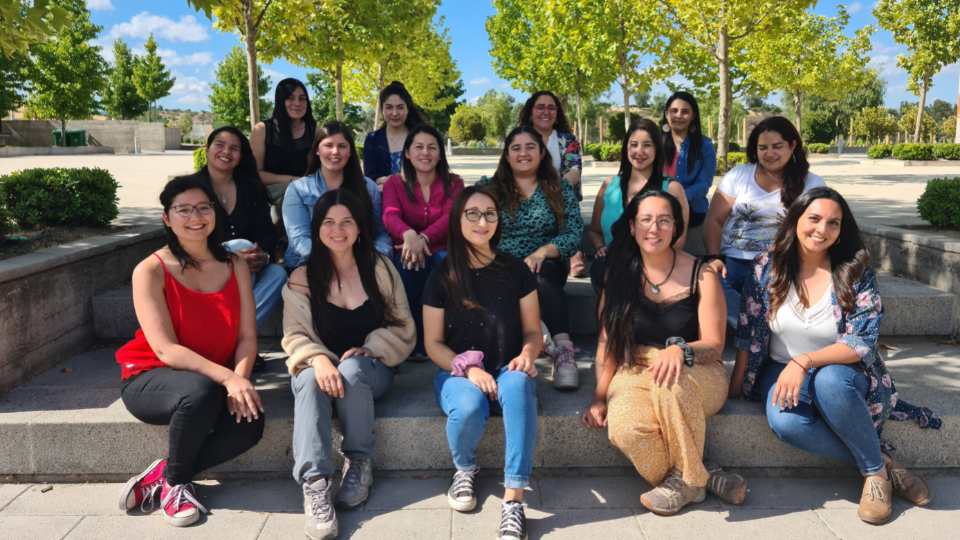- Innovation
- February 8th, 2023
Viña Concha y Toro celebrated the International Day of Women and Girls in Science
In celebration of this day, we talked to some of the professionals who work at Viña Concha y Toro’s Center for Research and Innovation.
This February 11 was the International Day of Women and girls in Science, and to celebrate it, talked with some of the women who work in different fields of science and are part of the team of Viña Concha y Toro’s Center for Research and Innovation (CRI).
We spoke with Rosa Roa, Ph.D., and Molecular Biology Researcher; Licarayen Cona, Master’s thesis student; Ana Monardes, M.Sc., and Technological Innovation Leader; Bárbara Valenzuela, Technology Management Analyst; Mónica Rodríguez, M.Sc., Spectrophotometry Analyst Specialist; and Claudia Ramírez, Sampling Technician.
What has it meant to you to have pursued a career related to science?
Rosa Roa: It has meant a path of constant growth and development. Science is based on asking questions and each step in my career has meant discovering, learning and working collaboratively to achieve the proposed goals. It is an enriching experience in many aspects.
Ana Monardes: Science and technology have a fundamental role to play in the development of our country. Studying and working in this environment has allowed me to contribute a grain of sand to this purpose, to exploit my curiosity and creativity, and to contribute to the generation of collaborative spaces that enhance business innovation.
Mónica Rodríguez: For me, science represents an opportunity to know and understand our environment, an opportunity to quench the curious spirit we have inside us.
Licarayen Cona: Science has allowed me to answer the curiosities that I have had since childhood and at the same time I have been able to formulate new questions that I have wanted to answer through science. Thanks to science I have been able to better develop critical thinking and I have questioned more the way the world works.
Bárbara Valenzuela: Although my basic training is not related to science, I believe I have become a good technology manager. Seeing how my daily work contributes to enabling an R&D&I environment has given me great personal and professional satisfaction.
What is the importance of working and developing your career at the CRI?
Rosa Roa: Working at Viña Concha y Toro and specifically at the CRI is a privilege. It is a high-level center in all its capacities, which allows us to relate perfectly with academia and other institutions in Chile and the world. I would also like to highlight its team, including a group of talented women who have helped position the CRI and Viña Concha y Toro as leaders in R&D&I in the private sector from different angles.
Ana Monardes: I am very happy and honored to be part of the CRI team, which cultivates and promotes excellence in all of its R&D activities and makes a relevant contribution to the national and international ecosystem. Joining Viña Concha y Toro has given a boost to my career; I have been able to take on new challenges, put my knowledge of innovation into practice, and learn from my colleagues constantly. It has been an incredible opportunity.
Mónica Rodríguez: The CRI feels like an environment conducive to the exchange of experiences and knowledge, which, from my personal experience, allows me to enjoy science surrounded by nature and great people.
Licarayen Cona: At the CRI I have been able to strengthen collaborative work, since my colleagues are able to share their knowledge to achieve our objectives in a better way. In addition, it allows us to develop research focused on the industry, so that it can continue to improve, making processes more optimal.
Bárbara Valenzuela: I consider working at the CRI a great milestone in my career. Seeing how the company is committed to science, technology, and innovation is undoubtedly a high-impact, transformational private effort for the country and the world. I feel very proud of and committed to the great team that is the CRI.



